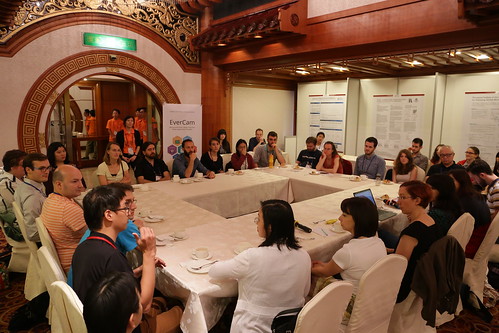Today November 5th, 2023, is the 1st day of the International Society for Music Information Retrieval Conference, which is taking place in Milan, Italy.
Unfortunately, ISMIR 2023 coincides with the award ceremony of ROMA (Women, University & Business) Awards 2023, and I had the honor of being awarded this year, and this, added to current work load, made me cancel my attendance to ISMIR in Milan.
Here I am with mixed feelings: happy for a great recognition to my career but sad to miss ISMIR, this year in Europe. Given the fact I am finalizing my service to ISMIR in 2023 as co-editor in chief of Transactions of ISMIR journal, I devoted this Sunday afternoon to reflect on all these wonderful ISMIR years.
Highlights of more than 20 years of ISMIR journey:
- 2001 – I become a member of ISMIR community, Paris was my 1st ismir!
- 2002 – I have been reviewer and author of the conference since them.
- 2010 – I joined the Program Committee, and have been acting as meta-reviewer.
- 2011 – I attended the fist Women in MIR meeting and became one of the core organizers, having contributed to the mentoring program, open repository, blog, with great colleagues, notably I worked with Anja Volk and Blair Kaneshiro.
- 2012 and 2017 – I acted as tutorial chair, and realized how important tutorials are to introduce newcomers to the MIR field, and contributed to having interesting introductory tutorials, this ending in a book with Markus Schedl and Jullián Urbano.
- 2016 – I became a member of board as President elect in 2016-2017 supporting Fabien Gouyon who was president by then.
- 2018 – I became the 1st female President of ISMIR (I hope there will be more soon please!). During this period, I tried to push for diversity in the field, from its community members to the bread of topics that we address, and tried to contribute to make our community both excellent in scientific terms and human values.
- 2018 – I acted as Program co-chair, which was a great experience to learn about the machinery of ISMIR reviewing process.
- 2019 – I had the pleasure to act as ISMIR General co-chair with Cynthia Liem. Happy to have contributed to a push for diversity in the field, including MIR for classical music (with PHENICX & TROMPA), staring a discussion around the link between fairness and diversity in MIR, with a tutorial on Fairness, Accountability and Transparency in Music Information Research (FAT-MIR) with Andre Holzapfel, Marius Miron and Bob L. Sturm.
- 2020 – I was one of the co-founders of Transactions of ISMIR, acting since them as co-editor in chief.
- 2022 – I contributed to a tutorial on Trustworthy MIR: Creating MIR applications with values, where we reflected, with Christine Bauer, Andrés Ferraro and Lorenzo Porcaro, on the recent developments on AI ethics as related to our field.
- 2023 – since 2019, I contribute as co-organizer to a satellite workshop on Human-Centric MIR.
The present and future in MIR and my research path
From 2024, I will be stepping out of TISMIR, leaving other people taking the lead and contributing with fresh ideas and innovations, in a field that needs to address and adapt to present and future challenges. The need to incentivize reviewers, engage in open discussions, foster scientific excellence, social impact or balance personal and collective good are amazing topics to deep on.
In the last years, I had focused in providing the scientific and technical support needed to Artificial Intelligence policies in Europe as, starting from the music domain, I can address broad societal challenges linked to the impact data-driven algorithms, looking at the balance between the opportunities they offer in terms of cognitive assistance, automation and scalability, and the risks they pose to safety and fundamental rights. AI ethics and regulation is an amazing field at the moment, particularly in Europe, where I am privileged to contribute, as lead scientistof the European Centre for Algorithmic Transparency, leading a team that provides technical and scientific support to the Digital Services Act and the AI Act within the European Commission.
My experience in the music information retrieval field has provided me the opportunity to witness along my career the tremendous impact that data-driven music technologies are having in music education and consumption. ISMIR has been pioneer in many of the current research trends, e.g. openness, multi-disciplinarity, diversity of views (academia, industry, cultures) and strong social impact.
It is now time to be fully aware that all the algorithms we create have a strong impact on listeners, singers, musicians, jobs, copyright, how we feel and think about the world, and our future. So it is for us the research community to make sure that MIR technologies are created WITH people and FOR people’s wellbeing. It is also for us to continue making our community inclusive, diverse and welcoming for new ideas and schemes, which will be much needed.
It has been a pleasure to serve the ISMIR community all these years, and I am looking forward to be part of it for many more, now from another angle, and hopefully attending ISMIR in the future!
In the meanwhile, greetings to all folks, I will miss you and the conference this year and still meeting some of you online for the editorial board meeting of TISMIR and HCMIR!
emilia






